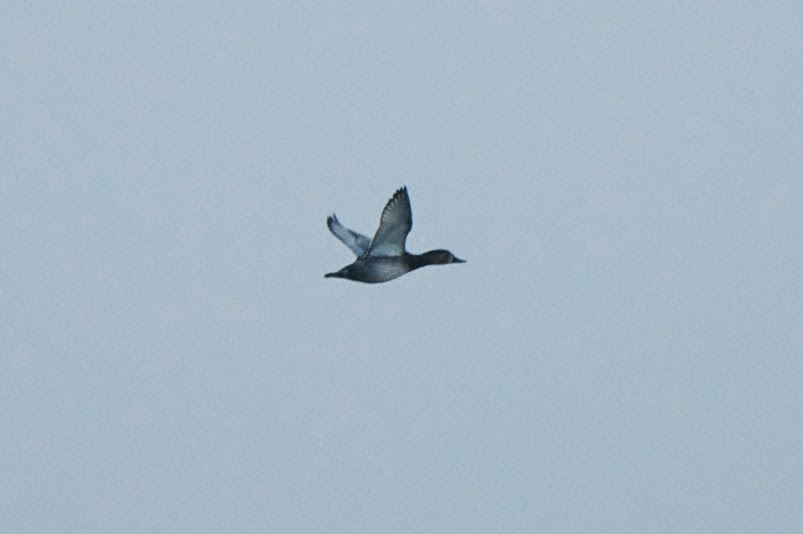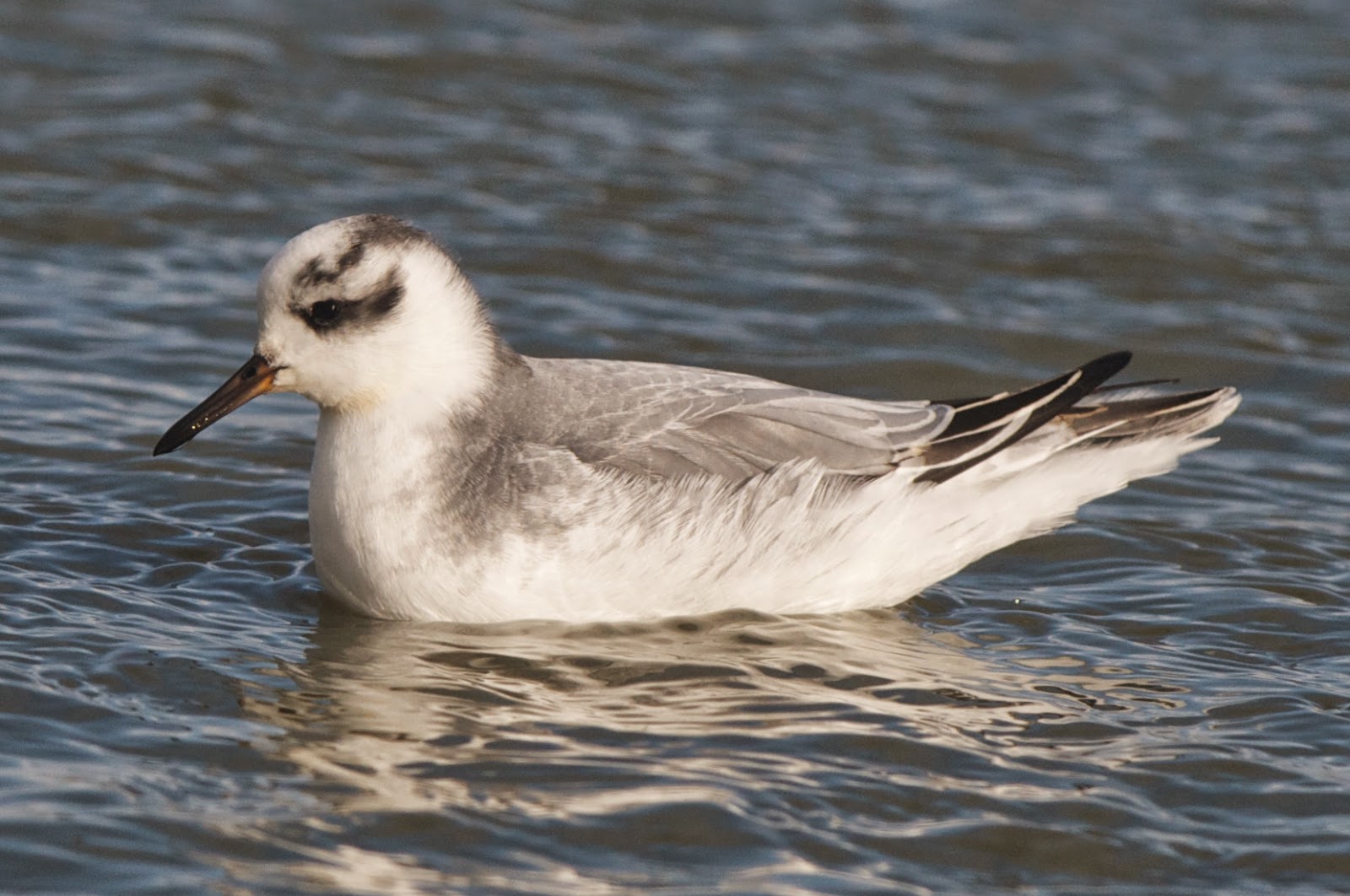It's mid-October already and quite honestly, I thought I had seen my last lifer here on St. Paul (after all, I leave in 4 days).
But of course, I was quite happy to be wrong in that. Scott found a diving duck on Weather Bureau Lake and got the word out... the problem was, we weren't sure if it was a COMMON POCHARD or CANVASBACK. I mean, how prepared was I in knowing the subtleties of pochards??
We eventually got good but distant scope views and digiscoped photos which confirmed that it was indeed a COMMON POCHARD, a Code 3 duck from the Old World.
When zooming way in on the photos, you can see a faint pale band across the top of the bill (which confirms it as pochard). This was evident every time we got a good, close look at the bill:
You can see the white on the bill again in this photo:
Another detail favoring pochard is the shape of the bill. Although the bill looks more like a Canvasback than a Redhead, the bill on this duck isn't as evenly-sloped as it is in Canvasback:
The following photo shows the size of the pochard (right) when compared to the GREATER SCAUP (left). Common Pochard is smaller than Canvasback and we all agreed that this bird didn't look Canvasback-sized:
Seeing the bird in flight really helped cement the ID for me; Canvasback would show a longer and probably thinner neck. Also, take a look at that bill; so wrong for Canvasback:
Happy times.
Now, fast forward to this evening when Doug and a client found a RUSTIC BUNTING in the Webster celery patch! Without much convincing, I hopped into a van and ventured up to see if I could flush this thing up by myself. I hobbled around the celery for quite a while with no luck whatsoever. It was getting darker and darker. I had come to grips that I had failed and was literally walking back to the car when my eyes caught movement. I took a step forward and look at what popped out... the bunting:
This is also "only" a Code 3 vagrant from the Old World but this was a lifer that came up numerous times in conversations with birders here on the island. I wanted it... badly. And they knew it. I'm just lucky that I've been able to spend 5 months here; if you do that, you'll connect with a lot of the rarities found.
Definitely not a lifer but still a quality bird for the island, Scott found this RUSTY BLACKBIRD at Antone Slough yesterday. It's the 11th Pribilof record:
Other recent arrivals included this SNOWY OWL. We had several this spring but this was the first we've had this fall:
Another new arrival was this RED-THROATED LOON. It's a horrible picture but hey, for my photo list, I don't mind:
This morning I was scoping offshore at Tonki Point when a bird mixed in with HARLEQUIN DUCKS caught my attention. Spot anything in the flock that doesn't belong?
It's a STELLER'S EIDER, my first for the fall. Some of you might know that I was lucky to work with this species up in Barrow back in 2005. In fact, the Steller's I've seen this year have been my first since that summer. Here it is again showing the bold white markings in the wing:
Shifting towards gulls (those of you who want can look away for a bit), the MEW GULL that has been hanging around was even more agreeable the other day:
Because there are several subspecies possible, we've been pretty cautious in calling this one or the other.... until recently. We fully believe it's an "American" Mew Gull, the most expected one I'd argue:
When scoping through gull flocks here, I tend to focus on primary color initially. That worked in this instance when this HERRING GULL popped out:
Then there is this nasty thing. Maybe it's a hybrid or maybe it's just a pale 2nd-cycle GLAUCOUS-WINGED but I really don't think it's a GLAUCOUS despite the bill...
... especially when considering that this gull next to it looks fine for a 2nd-cycle GLAUCOUS-WINGED:
Picking out an adult SLATY-BACKED GULL is a ton easier, I'd wager:
Had I mentioned the shift in the weather? Yeeeaaaah, we don't have temps in the 50s anymore. In fact, snow has reared its ugly head! I woke up the other morning to this:
... and later on that day, it did this:
... and when a RED PHALAROPE flies into a snow squall, it looks like this:
Speaking of RED PHALAROPES though... we have plenty around here:... and when they're feeding in the surf, they often have to make sure waves don't break ON them. So they all flush at the last second and land again in the calmer water:
Here are some closer still:
When watching flocks of these interacting, you'll notice they don't always get along. Here's one that's feeling a bit aggressive:
Sometimes, when it comes to fruition, they face off head to head:... and then they grab each other on the bill:
... and keep holding it until one gives up and flies off:
Anyway, I'll end the post with a photo of three different RED PHALAROPES. Enjoy:




























